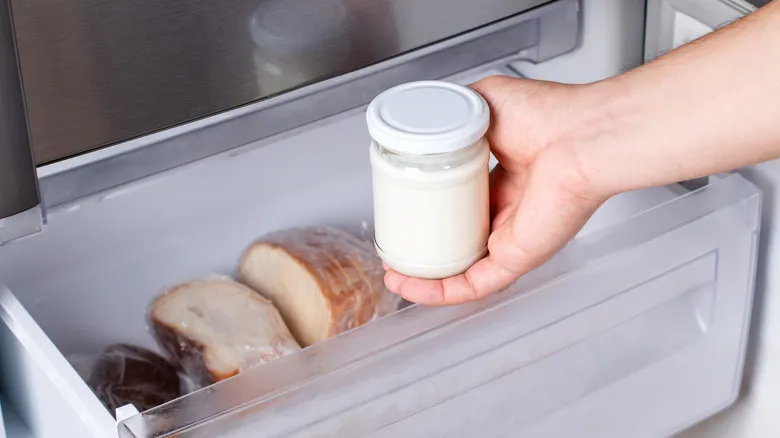How to tell if your yogurt is still OK to eat

Since there isn't a straightforward rule for determining whether yogurt is still safe to eat, you can assess its quality without solely depending on sell-by dates. First and foremost, if you see any mold on the yogurt, it should be discarded immediately. Mold can appear in various colors, not just the typical green; it may also be gray or pink.
In addition to mold, there are other less obvious indicators of spoilage to be aware of. One sign is an excessive amount of liquid on the surface of the yogurt. However, it's important to note that some liquid on top isn't always a cause for concern, especially with Greek yogurt, which is more thoroughly strained. A small amount of liquid, known as whey, is a normal part of yogurt. While there isn't a specific threshold for "too much" liquid, if you notice significantly more liquid than when you first opened it, it may be best to avoid eating it.
If you're uncertain about the liquid, look for other clear signs of spoilage. Key indicators include curdling or a clumpy texture; yogurt should always be smooth. Lastly, take a whiff of the yogurt: if it has a rancid or overly sour smell, that's a strong indication that it's no longer good. Generally, yogurt should have a neutral or faint smell, although flavored varieties may have a sweet aroma.
What might happen if you eat spoiled yogurt

Luckily, spoiled yogurt typically has an unpleasant taste, so the likelihood of becoming seriously ill from consuming a large amount is relatively low. However, you may experience some unpleasant symptoms such as vomiting, diarrhea, and nausea. The FDA points out that the risk increases if the yogurt is made from raw, unpasteurized milk, which is quite rare in the U.S. (and illegal in certain areas), so if you're purchasing well-known brands from supermarkets, it’s likely not a major concern. Fortunately, harmful pathogens find it difficult to thrive in standard pasteurized yogurt, as the pasteurization process eliminates them. Additionally, the acidity of yogurt helps inhibit their growth.
If you're worried about your yogurt spoiling before you can eat it, you can freeze it, and it should remain good for one to two months. Just keep in mind that the texture may not be as smooth once it’s thawed. Regardless of how you store it, yogurt has a limited shelf life, and your senses are the best guide to determine when it’s no longer good.
How to use up leftover yogurt

If you have a good amount of yogurt remaining in the container that you’d like to use instead of wasting, don’t throw it away. There are plenty of ways to utilize leftover yogurt before it spoils. For instance, you can create a creamy potato salad by replacing mayonnaise with Greek yogurt. Alternatively, enhance your mac and cheese by adding Greek yogurt, along with bacon and Panko breadcrumbs. Delicious!
If you’re in the mood for something sweeter, consider making a batch of sweet potato pancakes by substituting the sour cream in the recipe with Greek yogurt. You can also replace the eggs in a simple boxed cake mix with plain yogurt for a tasty upgrade.
Can you freeze yogurt?

If you're uncertain about finishing an entire container of yogurt before it goes bad, you can freeze it in an airtight container. If the original container is still sealed, you can freeze it in that as well. Frozen yogurt typically remains good for around two months before its flavor and texture start to deteriorate. When you're ready to enjoy it, just remove the yogurt from the freezer and let it thaw in the fridge overnight. Remember to give it a good stir before serving, as it may have separated during freezing.
Recommended

Everything You Need To Clean An Oven Door Is In Your Pantry

How This Common Habit Turns Your Knife Block Into A Safety Hazard

12 Canned Goods That Aren't Worth The Price Tag

The Problem With Storing Produce In The Plastic Bag They Came In
Next up

